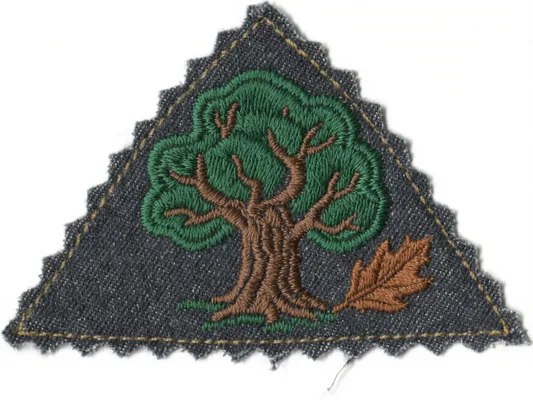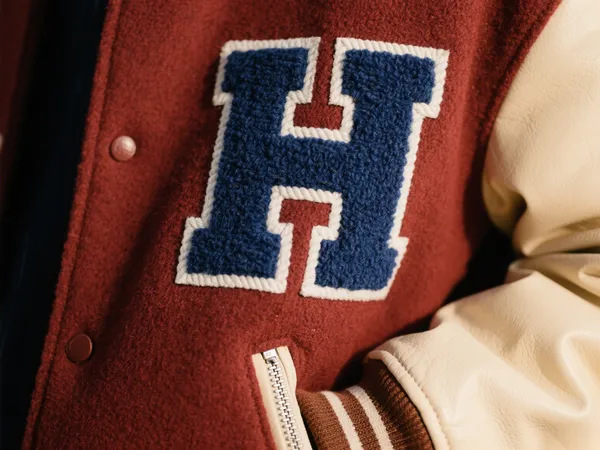Jeans are a staple in almost every wardrobe. From casual weekends to rugged outdoor use, they’re durable, stylish, and versatile. But even the toughest denim can wear thin, rip, or develop holes over time. Instead of throwing them away, why not extend their life—or even make them better than before? Fabric patches for jeans are a fantastic solution, whether you’re repairing damage or customizing your look.
In questo articolo esploreremo come utilizzare toppe stirabili per jeans, i benefici di denim repair patches, and creative ways to turn old jeans into something fresh and fashionable.

Why Use Fabric Patches for Jeans?
There are several compelling reasons to choose fabric patches when your jeans need attention:
- Conveniente: Patching jeans is far cheaper than buying a new pair.
- Eco-friendly: Repairing clothes reduces textile waste and supports sustainable fashion.
- Creative outlet: You can use patches to personalize your jeans, turning flaws into features.
Fabric patches for jeans aren’t just functional—they’re a tool for self-expression. Whether you’re covering a worn-out knee or adding flair to the back pocket, patches give you control over your denim style.
Types of Fabric Patches for Jeans
Choosing the right patch depends on your needs. Here are the most common options:
1. Iron On Jean Patches
These patches come with a heat-activated adhesive backing. Simply place the patch where needed, cover with a cloth, and press with a hot iron. They’re ideal for quick fixes and beginners.
2. Sew-On Patches
Sew-on versions are great for high-stress areas like knees or inner thighs. They stay secure through multiple washes and are less likely to peel over time.
3. Self-Adhesive Denim Repair Patches
These peel-and-stick patches offer instant application without any tools. They’re great for emergency repairs, though not always suitable for long-term durability.
4. Decorative Fabric Patches
Want to make a statement? Go for patches in bold colors, embroidery, or shapes. You’ll find everything from florals and stars to animal prints and vintage logos.

How to Apply Iron On Jean Patches
One of the most beginner-friendly options, toppe stirabili per jeans are easy to use. Here’s a step-by-step guide:
- Prep the Area: Clean and dry the area of the jeans you’ll be patching. Trim any loose threads.
- Posizionare la patch: Position the patch adhesive-side down over the hole or weak spot.
- Riscalda il tuo ferro da stiro: Set it to a high cotton setting, without steam.
- Stirare la toppa: Cover the patch with a cloth and apply pressure for 30-60 seconds.
- Let it Cool: Give the patch time to cool and adhere properly.
Tip: For added security, consider sewing around the edges after ironing.
When to Use Denim Repair Patches
Denim repair patches are essential for reinforcing areas prone to wear, like the inner thigh or knee. If you’re repairing kids’ jeans or workwear that takes a lot of stress, go with thicker, reinforced patches designed specifically for denim.
You can also use denim patches on the inside of jeans for a seamless exterior look, especially if you want a subtle repair. These “invisible” fixes are perfect when you want to maintain the original look of the jeans.

Creative Ways to Use Fabric Patches
Beyond repairs, fabric patches for jeans are a stylish DIY tool for personal expression. Here are some ways to get creative:
- Custom Back Pockets: Add a fun pattern or logo to one or both pockets.
- Disegni patchwork: Mix different shapes and colors for a boho, artsy look.
- Themed Legs: Create a vertical line of small patches up the leg for a statement style.
- Contrast Panels: Use large square patches in contrasting denim shades to create a fashion-forward piece.
Don’t be afraid to mix fabric textures—cotton, canvas, corduroy, and even leather-look patches can all pair well with denim when done tastefully.
Caring for Patched Jeans
To extend the life of your patched jeans, follow these simple care tips:
- Wash jeans inside-out on a gentle cycle.
- Avoid high heat in the dryer—air dry when possible.
- For iron-on patches, consider reinforcing with a few stitches for added durability.
- Check patches regularly and re-iron or re-stitch if corners start to lift.

Where to Find High-Quality Patches
Whether you shop online or at a local fabric store, choose patches that are:
- Made from durable fabric like denim or twill
- Backed with strong adhesive (for iron-ons)
- Machine washable
- Sized appropriately for your repair area
Look for sets that include a variety of shapes, sizes, and colors so you can handle any patch job creatively and confidently.
Considerazioni finali
Patching jeans doesn’t have to be a chore—it can be an opportunity. With the right fabric patches for jeans, you can fix holes, reinforce weak areas, and add your own style to something you already love. Whether you go with toppe stirabili per jeans for ease or opt for denim repair patches for long-term durability, you’ll be saving money, reducing waste, and making your wardrobe more unique.
So dig out that worn pair of jeans from your closet—it might just become your new favorite once you patch it up.



